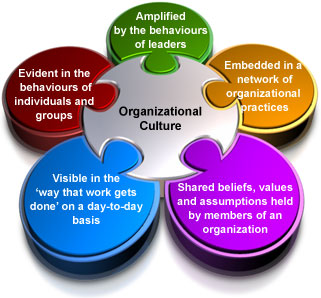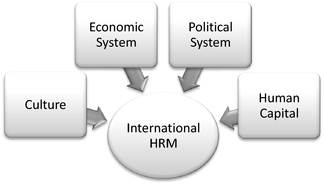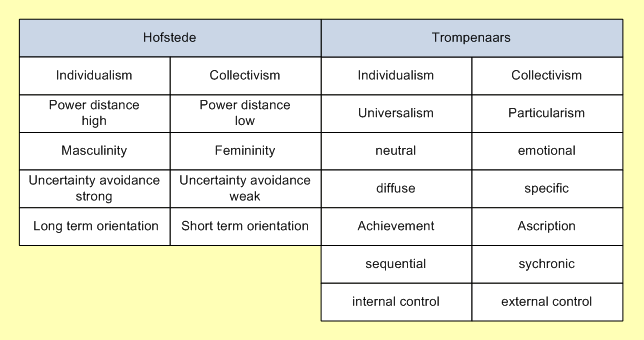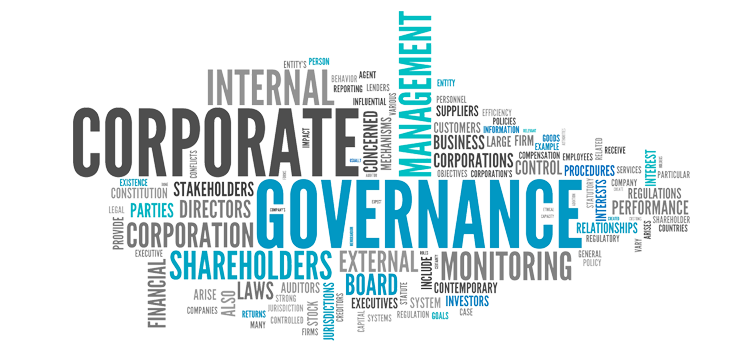Infrastructure Virtualization
Virtualization is a constantly growing trend in the business organizations of large scale. The approach of virtualization allows the organizations the ability to perform more work with fewer computers as the computer systems are actually relying on the computing powers of the system server which is replicated through the individual systems throughout the organization. Each system represents a single instance of the server computer. Implementing the virtualization techniques help a company save big on resources while keeping the productivity high.
This report is aimed towards analysing the applicability of the virtualization in the real organization of Regional Gardens Ltd. An implementation plan of the virtualization system will be developed as per the requirement specification of the organization. The advantages of the virtualization systems in data centre and legacy systems will be evaluated against productivity and cost-effectiveness. Virtualization techniques are generally implemented with challenges like information security and recover in case of disaster; therefore, both the issues with be discussed here with respect to the selected organization.
Introduction
Virtual desktop infrastructure is the approach of using a virtual machine as a way of hosting a different operating system in a machine other than the original or installed operating system in the machine. It is also possible to run a specific OS on many systems using virtualization technique while the OS is originally running on a centralized server system only. The Virtualization technique of this fashion is a variant of the basic client-server model of computing and is generally adapted by the organizations to enable virtual OS systems in the organizational IT infrastructure without the client-server model in its original form.
This report focuses on the implementation of virtualization of computer systems in the Regional Gardens Ltd organization. The organizations operates through three different offices, which includes a garden that is open for public viewing couple of times every year, A Regional Garden’s Nursery which operates as a seller of plants, and Regional Garden Planners, which is a gardening consultation firm operating for the organization and provides consultation about gardening to the general public. The managerial board at Regional Gardens is seeking the option of adapting the virtualization technique as a way of allowing its old computers to run relatively new OS, and is also planning to adapt to a virtualization technique to ease the pressure on its data centre which is costing a lot in cooling mechanisms. The report will analyse the implementation plan of virtualization for the organization as well as assessing the advantages and disadvantages of it.
What is Virtualization?
Virtualization in the field of computing technology refers to the ability of a machine to run a virtual machine on it even though the machine is not installed on the system. Virtualization can be performed not just for the applications, but for Operating Systems, run time environment and hardware components as well.
Over time, most of the functions that computers perform have in some way benefited from virtualization (Kusnetzky 2011).
Desktop virtualization is the technique of providing a different desktop environment in a already running desktop environment without installing the virtualized environment physically on the system. On the physical device that is hosting the virtualization, this technique provides a in-between layer for the desktop environment and the application software programs running on it by providing a virtual desktop environment to run the applications. With the desktop environment virtualization, it is also possible to use virtual applications on the virtual desktop environment using virtualized applications. It is also possible to run the virtual OS in all the systems of an organization with the use of a centralized OS installed on the server, which makes it very easy to keep the backup of all the information as virtually all the employees are making use of the systems through a OS that is physically present on one device only which is well protected. In such a situation, if one virtualized system is lost or broken, it will be very easy to restore a new system with the same information as it had stored on it before, since all the information is actually stored on virtual data center and a virtual desktop environment that are hosted somewhere else physically.
Proposed Virtualization Technique and Infrastructure
Virtualization technique can be used with different variations of it such as by installing a virtual OS maker on the system itself or by a centralized virtualization model that works using remote systems. Regional Gardens Ltd organization has a staff of 150 people under its payroll with its operations spawned across three different offices and locations. As the company is wishing to make use of a virtualization for its data centre as well as for the old specification systems installed in company’s IT infrastructure, the company should rely on the services of remote desktop virtualization technique to provide the relatively new OS programs to its fleet of old computers.
Hardware virtualization offers several benefits, including consolidation of the infrastructure, ease of replication and relocation, normalization of systems and isolation of resources (Wolf & Halter 2005).
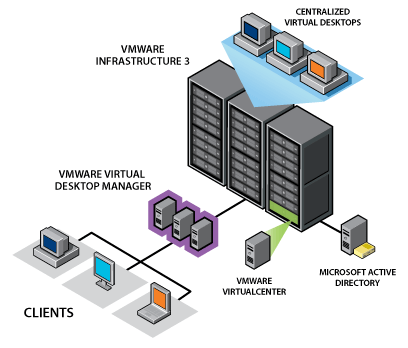
The remote virtualization technique for the computer systems of Regional Gardens Ltd will function as a client server model between the server hosting the OS originally and the computers systems which are relatively old in the organizational structure and are in need of virtualization to make use of new OS systems. In this infrastructure, the execution of different applications and OS features will take place on an OS system that is not installed on the individual systems, but will be installed physically on just the server system which is connected to the local clients using a remote connection mechanism. The interaction of the user with the applications running on the server system takes place through a remote virtual display that replicates the display of the server system on the local system of employees. In the environment of remote functioning, the data stored on the systems in only stored on the physically installed OS device which is the server and only the local hardware information are stored on the local machines. Due to this special properly, the IT infrastructure of the organization will get robustness and high reliability as the data stored is much more secure in this environment. The most common approach of implementing this kind of system architecture is by installing the OS on a server machine that is running hypervisor, and then host a number of different OS instances on the same server system to make use of them by local systems of employees working for Regional Gardens Ltd. This approach is known as the virtual desktop infrastructure technique and is generally abbreviated as VDI.
The remote virtualization technique to provide OS instances on the local computers using a OS instance installed on server side system is generally preferred in the following situations:
- The virtualization technology is highly efficient in the organizations where the availability requirements for the OS systems are very high and the technical support is not readily available every time. This is true in cases of retail companies and the branch office environment. This is also true in case of Regional Gardens Ltd, and having the OS system installed on the server system only helps the company infrastructure reducing the cost of maintenance and fixing technical errors in individual systems.
- The virtualization technique is also very helpful in situations where the high latency of the network reduces the performance and productivity of the general client-server module. In such cases, the remote desktop virtualization technique helps reducing the latency by using centralized system based on a variant of client-server model.
- In the organizations, where the data must entertain the need of remote access as well as data security issues. Both aspects conflict with each other, but with the remote virtualization technique, the remote nature of services is retained while keeping all files stored on the centralized system only that ensures the high level of security.
As some devices in the Regional Gardens Ltd are running on operating systems other than windows, the virtualization technique will allow running a windows OS in such systems without having to install the OS in these systems physically. With the proper implementation of the virtualized technique, the employees can also work on the windows OS through their non-Windows tablets and Smartphones.
The remote virtualization technique for the OS virtualization is also a great way of sharing different kinds of resources in the organization. It will be difficult for the organization to provide every employee with a dedicated high-end specification computer or to replace the old computers with expensive modern technology computers.
In the organizational structure of Regional Gardens Ltd, the virtualization technique will help the company with the accommodation of legacy systems as well as enhancing the security of the entire system architecture.
Data Center Virtualization
The Regional Gardens Ltd has a data centre where all the data information related to the organization and its three different offices is stored. The organization is currently facing the issue of high costing for the cooling of the data centre. The objective is to get the cost low for the data centre maintenance and cooling by using the virtualization techniques. For this purpose, the data centre can make use of the a virtual data centre which appears to be present physically within the organization, but is actually stored in a cloud and is replicated on the Regional Gardens Ltd systems through the use of virtualization. The systems need to be connected to the network in order to use this data centre technique. As the data is basically stored in the cloud networks and there is no physical data stored on the industry systems, the maintenance and cooling expenses can be saved. For security and restore purposes, a continuous backup of the data centre can be produced by the IT department of the organization which will keep a latest copy of the data stored.
Given the state of virtual and cloud-based infrastructure, it’s almost impossible not to think about end-to-end data environments residing in abstract software layers atop physical infrastructure (Cole 2014).
Introducing cloud computing involves moving computing outside this firewall, in effect dismantling the firewall and enabling much richer collaboration with various stakeholders (Willcocks, Venters & Whitley 2013).
In this digital age of networking systems, a large pool of business entities is looking forward to the cloud networks as the ideal solution of handling the responsibility of a network system. There is a big trend of implementing the cloud based networks in the business organizations and a large number of organizations have already implemented such a system. Most of the businesses adapting to the cloud networks are the once which are in need of upgrading their outdated network systems. The cost-effectiveness and flexibility present in the cloud networks is making such networks the ideal solutions to the problem of implementing a new network system.
Cloud Computing is the paradigm where computing resources are available when needed, and you pay for their use in much the same way as for household utilities (Harding 2011).
The character of the internet forces cloud providers and application builders to compromise, often in the form of eventual consistency (Waschke 2012).
Cloud technology in networking helps the organizations in keeping the infrastructure for the future changes in the network as well as keeps the development and maintenance of the system cost-effective for the company. The planning of infrastructure is very simply in this technology and it is also a dynamic approach that makes it very easy to make scalable to develop the cloud applications, for data storage, etc. There are various type of could networks that can be implemented and these types include clouds like Public, private, hybrid network or the latest technology in this field, Community cloud.
All of the different networking technologies in the cloud services are significantly different from one another and have own advantages and disadvantages. Based on the advantages of each cloud technology, the Regional Gardens Ltd can decide which kind of cloud solution to implement on the network. As the organization is having a network of 150 employees and only these employees have the access to the system, a private cloud network virtualization will be suitable for the needs of Regional Gardens Ltd.
In the business organizations where privacy is a big concern, private cloud networks are mostly used to keep the access to the network limited to the staff members. Such a private cloud allows a business entity to host a specialized application on the cloud and it is also possible for the organization to focus on security concerns with this approach which is component missing in the public kind of networks. This kind of network is not shared among a large pool of people or with other organizations. Such kind of a network can be hosted internally or externally.
There are two different types of private network based on the configuration
- On-premise private cloud: This is a cost effective method of developing a private cloud network for the organization. The cost for this and the operational costs of such a model will then be attached with the IT department of the company as the network will essentially become responsibility of the IT department. On premise private cloud networks are highly suitable for the applications that are hosted within organizations and offer high level of control or configuration ability to the management as well as high security to the whole network.
- Third party private cloud: These are also known as the externally hosted private cloud networks. Such cloud networks are designed by a specialist firm functioning in the networking industry for the exclusive use of one company only. In such a case, the cloud services are organized by the help of a third party network solution which also hosts the service. The service provider then develops a network that is managed for the purpose of that specific organization only and it is also ensured that the network developed is highly secure for use in organizational scenario.
For Regional Gardens Ltd, as the organization is not having an IT department, hiring services of a third party cloud company will be highly beneficial and recommended to keep the cloud secure and functional. Implementation of a cloud based virtual data centre will reduce the cost of maintaining a physical data centre.
The advantages of Virtualization for Regional Gardens Ltd
In the IT infrastructure of the Regional Gardens Ltd, the virtualization technique will provide great benefits. Some of these advantages are listed below:
- Consolidation: The technique of virtualization in the organization will reduce the workload on the non-efficient systems or the legacy systems by means of consolidation. The approach combines the workload of a number of machines on a single computer. Through the use of this technique, the employees can run more application on fewer hardware components. This is a cost-effective feature of virtualization in Regional Gardens Ltd as it does not require all systems to be of top-notch specification.
- A full data centre: In the present infrastructure of the organization’s data centre, the data centre is almost full and cannot handle more workload or adding more computers. Additionally, the cooling and maintenance of data centers are also running on their full limits and are costing a lot as well. Virtualization makes it easy on the datacenter by allowing adding as many computers as required to the datacenter without physically combining them. Virtualization of cloud based data center is the perfect solution for the datacenters. In this manner, the data is stored on a cloud network and the maintenance and cooling cost is significantly reduced.
- Hardware isolation: There are new hardware components coming out every other month with faster and better performance than the previously available components. However, shifting from one server hardware to another is a tough task and requires long configuration. There is also a risk that the new hardware component architecture may not work for the existing applications. In case of virtualized systems, this issue is not present as the systems are virtual and not physically present. Every machine in the network is actually replicating the server machine only hence, this issue is minimized heavily.
- Legacy operating systems: Regional Gardens Ltd is also facing issue of the legacy systems in its IT infrastructure. The organization wants these legacy systems to run the modern operating system just like the rest of the computers in the company structure. However, it is not natively possible as the hardware specifications of legacy systems are not adequate to hold the modern OS. Using the virtualization, such legacy systems can make use of virtually installed modern OS which are actually physically installed on the server system. This process will allow Regional Gardens Ltd to make use of its legacy systems.
Disaster Recovery in Virtualized Infrastructure
In the virtualized technique of data centre and the company systems, the computers run an OS that is physically installed on the server machine only. All the information that is stored on any of the computers in the organization is actually stored on the server system only. This approach reduces the risk of losing data or information through the individual device or computer damage. However, at the same time, it increases the dependability of the organization on a single server machine which is actually virtually providing its own OS instances to different computers in the network as all the data is stored on this machine only.
As the data is stored on the server only, the organization becomes prone to disastrous situations if the server machine is compromised or damaged. To overcome from this issue and to perform a disaster recovery in the virtualized infrastructure, the organization must take out backups of the data stored in the server machine in a periodic manner. For maximum security and protection of data against a disaster situation, multiple instances of recovery backup files should be stored in locations which are not close in proximity. Storing one of the backup instances in a cloud network is also a good option for the organization.
By using the method of periodic backups, the organization can protect its virtualized systems against any kind of disaster. In case of a disaster, if the server loses all of its information stored, then the latest backup file can be used to restore information in the server system which will be replicated to all the other computers in the system as well. As the network is virtualized, there is no need to restore the backup for individual computers and only restoring it on the server system would be enough to gain back the same functionality.
Information Security Changes Required
Use of a virtual network where all the employees of the company who are working on different computes are actually working on the same server machine system, the security issues are to be entertained differently. In this system all the employees of the company are making use of the same server therefore there needs to be some security constraints regarding the information stored on the server. Some security changes required are listed below:
- Using different OS instances: Instead of providing same OS instances to all the employees, the virtual server should run different OS instances for different computers.
- Using employee user-accounts with set privileges: Every employee of the Regional Gardens Ltd should be given a separate OS account to login to the computer and each account should have its own access privileges based on the position of the employee in company.
- Restricted access to stored files: The server system should have logics applies to restrict the access to the files created by other users. This approach will ensure that the information confidentiality is maintained even in the shared resource and storage scenario.
- Encrypting the system: For added protection, the files stored on the system should be kept encrypted.
Conclusion
The Regional Gardens Ltd is facing issues like legacy systems in the organization and high cost of maintaining the datacenters which are getting used up to their highest limits. The idea suggested by the management to make use of virtualization technique in order to reduce the cost of cooling the datacenter as well as making use of legacy systems has been analyzed through different perspectives. The implementation of virtual systems in the company infrastructure will assist the origination in better managing its resources and legacy systems as well as reducing the cost of maintenance for datacenter.
The issues of information security and recovery processes are also discussed in the report and it is found that the mentioned approaches will not create an overhead on the organization.
References
Cole, A 2014, Is the Virtual Data Center Inevitable?, IT Business edge, viewed 15 May 2014.
Harding, C 2011, Cloud Computing for Business: The Open Group Guide, Van Haren Publishing.
Kusnetzky, D 2011, Virtualization: A Manager’s Guide, O’Reilly Media, Inc.
Portnoy, M 2012, Virtualization Essentials, John Wiley & Sons.
Waschke, M 2012, Cloud Standards: Agreements That Hold Together Clouds, Apress.
Willcocks, L, Venters, W & Whitley, E 2013, Moving to the Cloud Corporation: How to Face the Challenges and Harness the Potential of Cloud Computing, Palgrave Macmillan.
Wolf, C & Halter, E 2005, Virtualization: From the Desktop to the Enterprise, Apress.

